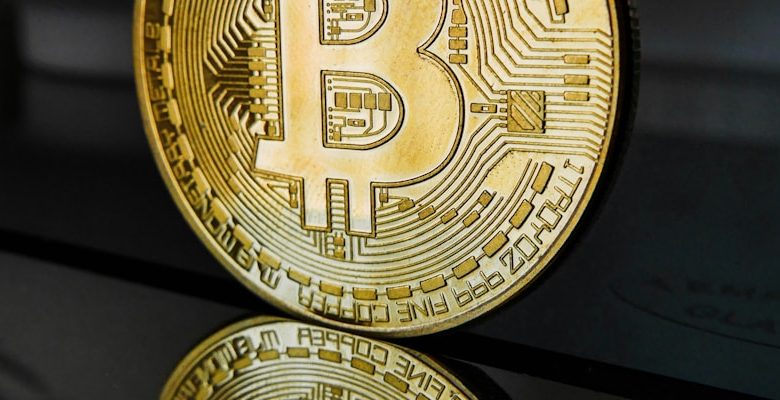How to Evaluate the Long-Term Value of an NFT

- Understanding the Basics of NFTs
- Factors to Consider When Evaluating NFT Value
- Analyzing the Scarcity and Rarity of NFTs
- Exploring the Demand and Market Trends for NFTs
- The Importance of Artist Reputation in NFT Valuation
- Long-Term Investment Strategies for NFT Collectors
Understanding the Basics of NFTs
NFTs, or non-fungible tokens, have become a popular topic in the world of digital assets. Understanding the basics of NFTs is crucial when evaluating their long-term value. NFTs are unique digital tokens that represent ownership of a specific item or piece of content. Unlike cryptocurrencies like Bitcoin or Ethereum, which are fungible and can be exchanged on a one-to-one basis, NFTs are one-of-a-kind and cannot be replicated.
One key aspect of NFTs is their use of blockchain technology, which provides a transparent and secure way to verify ownership and authenticity. Each NFT is stored on a blockchain, which is a decentralized digital ledger that records transactions. This means that the ownership and history of an NFT can be easily traced and verified, adding to its value and appeal.
When evaluating the long-term value of an NFT, it is important to consider factors such as the rarity, demand, and provenance of the digital asset. Rarity plays a significant role in determining the value of an NFT, as items that are scarce or unique are often more sought after by collectors. Demand is another crucial factor, as the value of an NFT can fluctuate based on market trends and interest from buyers.
Provenance, or the history of ownership, is also important when assessing the value of an NFT. Knowing the origins of a digital asset and its previous owners can provide valuable insights into its authenticity and reputation. Additionally, factors such as the reputation of the creator or artist behind the NFT can influence its long-term value.
In conclusion, understanding the basics of NFTs is essential for evaluating their long-term value. By considering factors such as rarity, demand, provenance, and creator reputation, investors and collectors can make informed decisions when buying or selling NFTs. With the right knowledge and research, individuals can navigate the evolving world of digital assets and maximize the potential value of their NFT investments.
Factors to Consider When Evaluating NFT Value
When evaluating the long-term value of an NFT, there are several factors that you should consider to make an informed decision. One important factor to consider is the scarcity of the NFT. The rarer an NFT is, the more likely it is to retain its value over time. Additionally, you should look at the demand for the NFT. If there is a high demand for a particular NFT, it is likely to hold its value better in the long run.
Another factor to consider is the reputation of the creator of the NFT. NFTs created by well-known artists or brands are more likely to have a higher long-term value than those created by unknown artists. Additionally, you should look at the quality of the artwork or content of the NFT. High-quality NFTs are more likely to retain their value over time compared to low-quality ones.
Furthermore, you should consider the platform on which the NFT is being sold. Some platforms have better reputations and are more secure than others, which can affect the long-term value of an NFT. Finally, you should consider the overall market trends for NFTs. Just like any other investment, the value of an NFT can be influenced by market trends and fluctuations.
By considering these factors when evaluating the long-term value of an NFT, you can make a more informed decision about whether or not to invest in a particular NFT. It is important to do your research and consider all of these factors before making a decision to ensure that you are making a sound investment.
Analyzing the Scarcity and Rarity of NFTs
When evaluating the long-term value of an NFT, it is crucial to consider the scarcity and rarity of the digital assets. NFTs are unique tokens that are indivisible and cannot be replicated. This scarcity is what gives NFTs their underlying value and makes them desirable to collectors and investors alike.
Scarcity in the world of NFTs is determined by the limited number of tokens created for a particular collection. The fewer tokens available, the more scarce and potentially valuable they become. Rarity, on the other hand, refers to the uniqueness of each individual token within a collection. A rare NFT is one that stands out from the rest due to its distinct features, such as being the first of its kind or having a special attribute.
Collectors are often drawn to NFTs that are both scarce and rare, as these qualities can drive up demand and increase the value of the tokens over time. When assessing the long-term potential of an NFT investment, it is essential to consider how these factors contribute to the overall appeal and marketability of the digital asset.
Exploring the Demand and Market Trends for NFTs
In order to evaluate the long-term value of an NFT, it is crucial to explore the demand and market trends surrounding these digital assets. Understanding the factors that drive interest in NFTs can provide valuable insights into their potential for appreciation over time.
One key aspect to consider is the growing popularity of NFTs among collectors, investors, and artists. The unique nature of these digital assets, which are one-of-a-kind and verifiable on the blockchain, has captured the attention of individuals looking for new ways to buy, sell, and own art, music, and other forms of creative content.
Additionally, the mainstream media coverage of high-profile NFT sales and collaborations has helped to elevate the profile of these digital assets in the public eye. This increased visibility has led to a surge in demand for NFTs across various sectors, from art and gaming to sports and entertainment.
Furthermore, the emergence of NFT marketplaces and platforms has made it easier for creators and buyers to participate in the NFT ecosystem. These platforms provide a space for individuals to discover, mint, and trade NFTs, creating a vibrant marketplace where value can be exchanged and realized.
By staying informed about the latest trends and developments in the NFT space, investors can make more informed decisions about which digital assets to acquire and hold for the long term. Keeping a pulse on the demand for NFTs can help investors anticipate shifts in the market and position themselves for success in this rapidly evolving landscape.
The Importance of Artist Reputation in NFT Valuation
When evaluating the long-term value of an NFT, one crucial factor to consider is the reputation of the artist behind it. The reputation of an artist can significantly impact the value of their NFTs, as collectors are often willing to pay a premium for pieces created by well-known and respected artists.
Artists with a strong reputation in the art world are more likely to attract a larger audience of collectors, which can drive up the demand for their NFTs. Additionally, established artists may have a track record of creating valuable and sought-after artwork, which can further enhance the value of their digital creations.
On the other hand, NFTs created by lesser-known or emerging artists may not command as high a price in the marketplace. Collectors may be more hesitant to invest in NFTs from artists with less established reputations, as there is a higher degree of uncertainty surrounding the long-term value of their work.
Ultimately, the reputation of the artist plays a significant role in determining the value of an NFT. Collectors are more likely to invest in pieces from artists with proven track records and strong reputations, as they believe these artworks will hold their value over time. As such, when evaluating the long-term value of an NFT, it is essential to consider the reputation of the artist behind it.
Long-Term Investment Strategies for NFT Collectors
Investing in NFTs can be a lucrative endeavor, but it’s crucial to have a long-term strategy in place to maximize your returns. When evaluating the long-term value of an NFT, collectors should consider a few key factors that can help guide their investment decisions.
One important long-term investment strategy for NFT collectors is to focus on acquiring pieces from established artists with a proven track record of success. These artists are more likely to retain or increase in value over time, making their NFTs a safer investment choice. Additionally, collectors should look for NFTs that are part of a larger collection or series, as these tend to hold their value better than standalone pieces.
Diversifying your NFT portfolio is another vital strategy for long-term success. By investing in a variety of different types of NFTs, collectors can spread out their risk and increase their chances of seeing positive returns. This can include investing in NFTs from different artists, genres, or platforms to ensure a well-rounded portfolio.
Furthermore, staying informed about the latest trends in the NFT market is essential for long-term success. By keeping up to date with industry news, collectors can identify emerging opportunities and potential threats to their investments. This knowledge can help them make informed decisions about when to buy, sell, or hold onto their NFTs for the long term.
In conclusion, by following these long-term investment strategies, NFT collectors can increase their chances of seeing positive returns on their investments. By focusing on established artists, diversifying their portfolios, and staying informed about market trends, collectors can build a strong foundation for long-term success in the world of NFTs.



